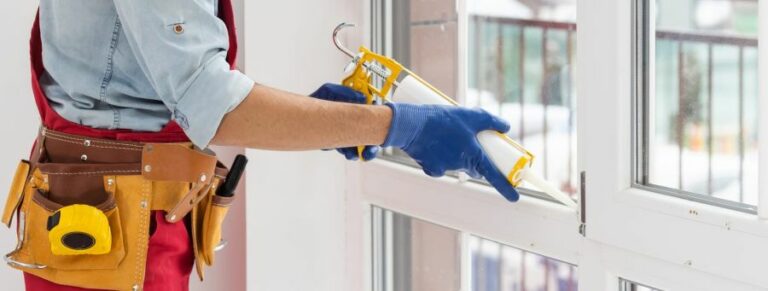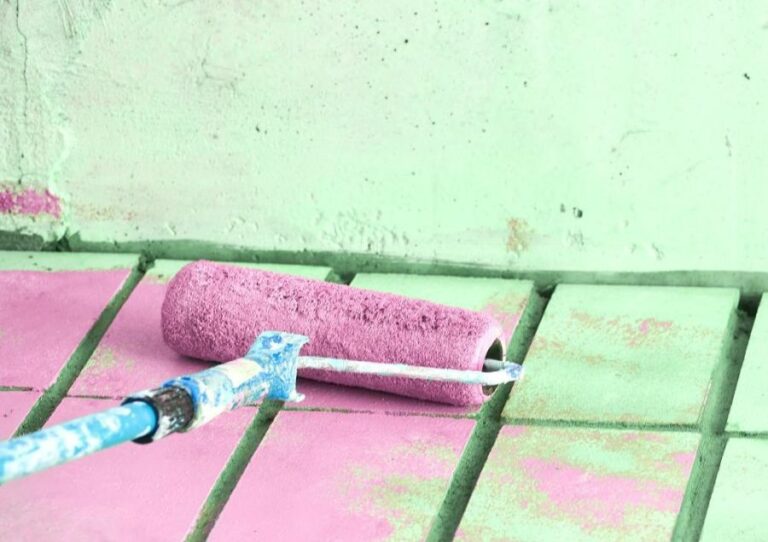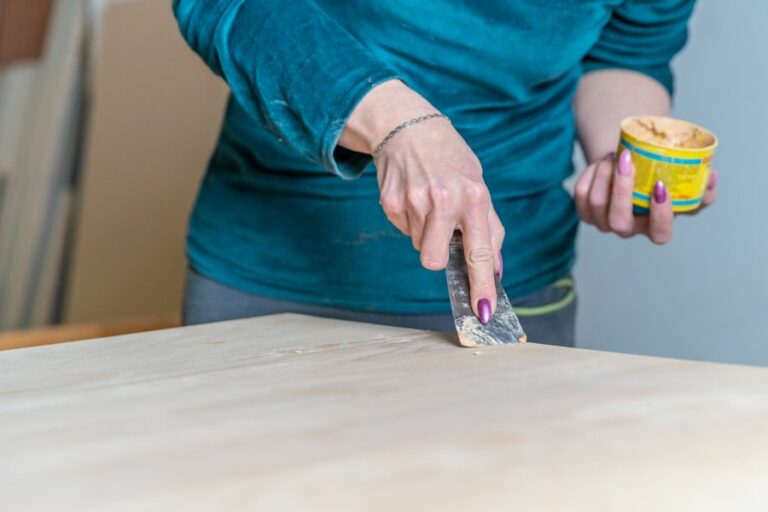Paint Application: Best Sanding Methods. What Pros Say
Sanding is a critical step in any paint application process to achieve that perfect, smooth finish we all desire. Fear not, because I am here to share my extensive knowledge of the best sanding methods to ensure your paint job is flawless. By understanding the appropriate techniques and tools, you’ll be well-equipped to tackle your project with confidence and ease.
Paint application, best sanding methods:
To achieve a smooth paint application, use proper sanding methods by choosing the appropriate sanding tools, such as sanding blocks, sponges, or power sanders. Select sandpaper based on grit size and material type and progress from coarse to fine grit. Sand surfaces evenly, always in the direction of the wood grain, and clean the surface after sanding. Sand between paint coats for optimal adhesion and finish.

Discover the best sanding methods to achieve a flawless paint application in our comprehensive guide. Uncover expert tips and techniques for a professional finish that will turn heads. Read on to elevate your paint project to the next level!
Contents
- 1 Optimal Sanding Techniques for Paint Application
- 2 Top Methods for Sanding Paint Effectively
- 3 Ideal Smoothness Level Prior to Painting
- 4 Achieving an Ultra-Smooth Paint Finish
- 5 Recommended Sandpaper for Intercoat Sanding
Optimal Sanding Techniques for Paint Application
To achieve a smooth and flawless finish when painting, proper surface preparation is crucial. One of the most critical steps in this process is sanding.
• The Importance of Sanding
Sanding is essential for multiple reasons. First, it removes imperfections such as scratches, rough spots, and bumps from the surface, ensuring a smooth and even finish. Second, sanding helps in promoting adhesion by creating tiny grooves and scratches that allow the new paint to adhere properly.
Lastly, sanding removes any existing coat of paint, varnish, or stain, thus preventing the new coating from reacting chemically with the old one.
• Choosing the Right Sanding Tool
Selecting the right sanding tool is crucial in achieving the desired results. Here are some sanding tools to consider:
– Manual Sanding Tools
- Sanding block: A sanding block, typically made of rubber or foam, allows you to wrap the sandpaper around it, providing a flat surface to sand evenly.
- Sanding sponge: This flexible sponge has an abrasive coating on its surface, making it perfect for sanding curved and irregular surfaces.
– Power Sanding Tools
- Orbital sander: An orbital sander moves in a circular motion and is ideal for large, flat surfaces.
- Random orbit sander: This sander has a round pad that vibrates and moves in tiny circles, leaving a smoother finish than an orbital sander.
- Detail sander: Also known as a mouse or corner sander, this tool is perfect for reaching tight spots and corners due to its small, triangular-shaped pad.
• Selecting the Right Sandpaper
When choosing sandpaper, consider the following factors:
- Grit size: Sandpaper comes in various grit sizes, representing the number of abrasive particles per square inch. Lower grit sizes (40-80) are more coarse and used for rapid material removal, while higher grit sizes (180-400) are fine and used for finishing purposes.
- Material type: Sandpaper is made from different materials, such as aluminum oxide (ideal for wood, paint, and metal), garnet (best for hand-sanding wood), and silicon carbide (perfect for wet-sanding metal or between coats of varnish or paint).
• Sanding Techniques for Paint Application
– Preparing the Surface
Before you start sanding, ensure the surface is clean and free from dirt, grease, and dust. Use a mild detergent solution and a soft cloth or sponge to wipe down the surface. Allow it to dry completely before proceeding.
– Sanding the Surface
Follow these steps for effective sanding:
- Start with coarse-grit sandpaper (40-80 grit) for initial sanding to remove significant imperfections and level the surface.
- Switch to medium-grit sandpaper (100-150 grit) to remove the scratches created by the coarse grit and to smoothen the surface further.
- Finish with fine-grit sandpaper (180-400 grit) for final smoothing, ensuring a perfect surface for the paint application.
When sanding, always sand in the direction of the wood grain to minimize scratches. Use even and consistent pressure without pressing too hard or staying in one spot too long.
– Cleaning the Surface After Sanding
After sanding, remove dust and debris using a vacuum cleaner or a soft-bristled brush. Then, wipe the surface with a tack cloth or a damp cloth to ensure it’s completely clean before you proceed with painting.
• Sanding Between Paint Coats
Sanding between coats of paint is a crucial step that ensures proper adhesion and a smooth finish. Use fine-grit sandpaper (220-320 grit) and sand the surface lightly until it feels smooth to the touch.
This also helps remove any dust or debris that might have settled on the wet paint. Remember to clean the surface with a tack cloth or a damp cloth after sanding.
• Conclusion
The right sanding methods play a pivotal role in achieving a smooth, flawless paint application. By selecting the appropriate sanding tools, and sandpaper, and employing proper sanding techniques, you can significantly enhance the quality of your painting project.
Method | Description | Best Uses |
|---|---|---|
Hand Sanding | Using sandpaper or a sanding block by hand to smooth the surface. | Small projects, touch-ups, and areas that are difficult to reach with a power tool. |
Orbital Sander | An electric-powered sander that moves sandpaper in a circular motion. | Medium to large projects, and areas in need of a finer finish. |
Random Orbit Sander | An electric-powered sander that combines both the circular and back-and-forth motion of the sandpaper. | Medium to large projects, and areas that require more aggressive sanding. |
Detail Sander | A smaller electric-powered sander designed for intricate or tight spaces. | Small projects or areas with complex shapes and tight corners. |
Belt Sander | An electric-powered sander that uses a continuous loop of sandpaper on a pair of drums to remove material quickly. | Large projects and areas that require fast material removal. |
Top Methods for Sanding Paint Effectively
• Introduction to Sanding Paint
Sanding paint requires a knowledge of the appropriate techniques and tools to achieve fantastic results. As an experienced professional, I understand the importance of correctly preparing surfaces by sanding them beforehand, as this can drastically improve the final outcome of your paint job.
• Why Sand Paint?
Sanding paint is essential in several scenarios, including:
- Preparing a surface for painting
- Removing old, flaking paint
- Smoothing out paint drips, runs, or imperfections
- Creating a bonding surface for the new paint to adhere to
By following the proper sanding techniques, you can achieve a smoother and more attractive finish.
• Sanding Tools and Materials
When sanding paint, it is crucial to select the right tools and materials to ensure a successful result. Some of these tools are:
– Sandpaper and Sanding Sponges
Sandpaper comes in various grits, which determines the coarseness of the paper. Lower grit numbers indicate coarser sandpaper, while higher grit numbers signify finer paper.
For sanding paint, I recommend using a range of grits, starting from 80 to 100 grit for rough surfaces, 120 to 150 grit for intermediate smoothing, and 220 to 320 grit for final finishing. Sanding sponges are ideal for contours and uneven surfaces.
– Electric Sanders
There are several electric sanders available, each designed for specific tasks:
- Orbital Sander: Most commonly used for sanding paint, its random orbit action reduces visible scratches and creates a smoother surface.
- Detail or Palm Sander: Suitable for sanding smaller, more intricate areas or tight spaces.
- Belt Sander: Valuable for large, flat surfaces or removing a significant amount of material quickly.
– Sanding Blocks
Sanding blocks provide a firm, even pressure while sanding, making it an essential tool for manual sanding.
• Essential Safety Tips
When sanding painted surfaces, it’s crucial to take appropriate safety precautions:
- Wear a dust mask to prevent inhalation of paint and sanding dust particles.
- Utilize safety goggles to protect your eyes from debris.
- Wear gloves to prevent direct contact with paint and chemicals.
- Ensure adequate ventilation in your work area.
- If working with lead paint, follow specific guidance from reputable sources like the EPA to avoid potential health risks.
• How to Sand Painted Surfaces
– Step 1: Assess the Surface
Before you begin sanding, inspect the surface to determine if any areas require special attention, such as unevenness or flaking paint.
– Step 2: Choose the Right Tool and Sandpaper Grit
Select the appropriate sanding tool and start with coarse-grit sandpaper (80 to 100 grit) for initial sanding, moving to finer grits (up to 320 grit) as you progress.
– Step 3: Sand with Even Pressure and Motion
Using even pressure and motion, sand the surface in the direction of the grain for wood surfaces, or for other materials, use circular motions to avoid noticeable scratches.
– Step 4: Wipe Down the Surface
After each stage of sanding, use a clean, damp cloth to remove the sanding dust and evaluate the surface.
– Step 5: Final Touches
For the final sanding step, a very fine grit sandpaper (320 grit) will help achieve a smooth finish that is ideal for new paint application.
• Finishing Up
Sanding paint requires understanding the tools, techniques, and safety precautions to achieve impressive results.
By carefully selecting the right sandpaper grits and appropriate sanding tools, and following appropriate safety measures, you can effectively prepare your surfaces for a professional-looking paint job.
Step | Description |
|---|---|
1 | Choose the right type of sandpaper (fine-grit: 180-220). |
2 | Use a sanding block or sponge for better control and even pressure. |
3 | Remove any fixtures, hardware, or covers (e.g., outlet covers) in the area to be sanded. |
4 | Protect surrounding surfaces with masking tape and drop cloths. |
5 | Clean the surface to remove dust, dirt, and grease. |
6 | Start sanding using light, even pressure and sand in a circular motion. |
7 | Periodically wipe the surface with a tack cloth to remove dust. |
8 | After sanding, clean the surface with a damp cloth and allow it to dry before applying a new coat of paint. |
Ideal Smoothness Level Prior to Painting
• The Importance of Proper Sanding
Proper sanding is a crucial step in preparing surfaces before painting. It can significantly impact the appearance and durability of the final paint job.
Good sanding ensures better adhesion of the paint to the surface, promoting a flawless and long-lasting finish.
• Understanding Sandpaper Grit
Sandpaper is available in a variety of grit sizes, which indicate the coarseness or fineness of the abrasive particles. The grit number is directly related to the size of the abrasive particles on the sandpaper.
Higher grit numbers have smaller particles and result in a smoother surface, while lower grit numbers have larger particles and produce a coarser finish.
When selecting sandpaper, it’s essential to choose the appropriate grit for the specific task. Below are some common grit sizes and their general applications:
- Coarse Grit (40-60): This grit range is typically used for initial sanding, removing larger defects, and shaping the surface. It’s best for stripping paint or varnishes quickly, but it will leave noticeable scratches that require refining with finer grits.
- Medium Grit (80-120): Ideal for smoothing the surface after the initial coarse grit sanding, medium grit is perfect for removing minor imperfections and preparing the surface for painting.
- Fine Grit (150-240): Fine-grit sandpaper is primarily used for final surface preparation before painting, ensuring a smooth finish. It’s perfect for removing fine scratches left by the previous medium-grit sanding.
- Super Fine Grit (320 and above): This grit range is reserved for polishing and refinishing; usually, it’s not necessary before painting unless a high-gloss finish is required.
• Determining the Ideal Smoothness
The best smoothness to achieve before painting depends on the specific project and the desired finish. Below are our recommendations based on the paint type and existing surface conditions:
– Painting on Bare Wood
If you are working with bare wood, it’s generally recommended that you start with a coarse grit, around 80, to even out the surface quickly.
Progress through medium grits, such as 100 or 120, to remove any remaining imperfections. Finally, use a fine grit, like 180 or 220, to achieve a smooth finish that is perfect for painting.
But it’s essential to know that certain wood species, like oak or mahogany, may require even finer grits, in the 240-320 range, for a smoother appearance.
– Painting Previously Painted Surfaces
For previously painted surfaces, sanding is typically done to remove any peeling or loose paint as well as to rough up the surface for better paint adhesion. Use medium-grit sandpaper, such as 100 or 120, to remove any loose or chipping paint.
Follow with fine-grit sandpaper, like 180 or 220, to smooth out any uneven areas and ensure proper adhesion of the new paint.
For surfaces with multiple layers of old paint, a paint stripper might be necessary before sanding to achieve the desired smoothness.
– Achieving a High-Gloss Finish
For a high-gloss finish, the surface must be sanded to an even smoother texture. After using medium and fine grit sandpaper, as previously mentioned, continue sanding with 320-400 grits for ultra-smoothness.
This step is particularly important when working with high-gloss paint or woodwork that will be stained with a glossy clearcoat because any imperfections will be accentuated by the glossy finish.
• Sanding Techniques and Tips
Here are some valuable recommendations from our experience:
- Sanding Direction: Always sand in the direction of the wood grain or the existing paint pattern to minimize visible scratches.
- Clean Surface Throughout: Remember to clean the surface regularly to remove any sanding dust or debris, ensuring proper adhesion of the paint.
- Inspect the Surface: Take your time to inspect the surface under proper lighting for any imperfections before moving on to finer grits or painting.
- Use Quality Sandpaper: Invest in high-quality sandpaper, as cheap or worn-out sandpaper may lead to ineffective sanding and wasted time.
Achieving a smooth, flawless finish before painting does require time and dedication. Still, the results will be well worth the effort when you see the professional, long-lasting outcome.
Achieving an Ultra-Smooth Paint Finish
A super smooth paint finish can elevate the appearance of any surface, giving it a professional and polished look. The process of achieving this finish may seem daunting, but with the right tools, techniques, and patience, anyone can master it.
• Step 1: Choose the Right Tools and Materials
The foundation of a smooth paint finish starts with selecting the appropriate tools and materials. Here’s what you’ll need:
– Paint
Choose a high-quality paint with a sheen that suits your preference. High-gloss or semi-gloss paint offers a more polished look, while flat or eggshell paint provides a smoother finish.
– Paintbrushes and Rollers
Select the right type of brush and roller for your project. Synthetic brushes, like nylon or polyester, work well with water-based paints, while natural bristle brushes are more suitable for oil-based paints. Use a roller with a short nap (1/4 inch to 1/2 inch) for a smoother finish.
– Paint Sprayer
A paint sprayer can provide a significantly smoother and more consistent finish than using brushes or rollers. Although it requires a larger initial investment, it’s worth considering for larger projects or for those who regularly paint surfaces.
– Sandpaper and Sanding Block
For superior results, sanding between coats is crucial. Purchase fine grit sandpaper (220 to 320 grit) and a sanding block to ensure even pressure is applied when sanding.
– Tack Cloth
A tack cloth is useful for removing dust and debris from the surface before applying paint.
– Primer
Invest in a high-quality primer to help create a smooth base for your paint.
• Step 2: Prepare the Surface
Prepping the surface is essential to achieve a smooth finish. Follow these steps:
- Clean the surface: Remove dirt, grease, and grime from the surface with soap and water. Rinse thoroughly and let it dry completely.
- Repair damage: Fill in any holes or cracks with a suitable filler, and then sand the area until smooth.
- Sand the surface: Lightly sand the entire surface with fine-grit sandpaper to create a smooth base for the primer and paint. Wipe away dust with a tack cloth.
• Step 3: Apply Primer
Creating an even base with primer is key to a smooth paint finish:
- Stir the primer: Stir the primer thoroughly to ensure proper consistency and even distribution of pigments and resins.
- Apply the primer: With a brush, roller, or sprayer, apply the primer to the surface in a thin, even coat. Make sure to cover the entire surface.
- Allow the primer to dry: Allow the primer to dry according to the manufacturer’s instructions, typically at least 24 hours.
- Sand the primer: Once dry, lightly sand the surface with fine-grit sandpaper to create a smooth base for the paint. Wipe away dust with a tack cloth.
• Step 4: Apply Paint
The process of applying paint is crucial to achieving a smooth finish:
- Stir the paint: Stir the paint thoroughly to ensure the proper consistency and even distribution of pigments and resins.
- Apply the first coat of paint: Using a brush, roller, or sprayer, apply the paint in thin, even coats, making sure to cover the entire surface. Be mindful of drips, as they can create an uneven finish.
- Allow the paint to dry: Allow the paint to dry according to the manufacturer’s instructions, typically at least 24 hours.
- Sand between coats: Lightly sand the surface with fine-grit sandpaper after each coat of paint. Wipe away dust with a tack cloth.
- Apply additional coats: Repeat the process of applying paint and sanding between coats until the desired coverage is achieved. The number of coats required will depend on the paint and surface.
• Step 5: Apply Protective Coating (Optional)
For a more durable finish, consider applying a protective topcoat such as a clear polyurethane. This step is especially recommended for surfaces that may be exposed to moisture or frequent handling.
• Step 6: Inspect and Touch-Up
Inspect the surface for any imperfections once the paint and protective coating are dry. If you notice any areas that require touch-ups, lightly sand those spots and apply the paint as needed.
• Additional Tips for a Super Smooth Paint Finish
- Use a paint conditioner, like Floetrol, to help the paint flow more smoothly and improve leveling.
- Be patient and take your time. Rushing the process can lead to mistakes and an uneven finish.
- Maintain a clean workspace, free of dust and debris, to prevent particles from settling on the wet paint.
- Practice good paintbrush and roller care by cleaning and storing them properly, according to the instructions provided by the manufacturer.
Step | Description |
|---|---|
1 | Prep the surface: Sand the surface and remove any debris, dirt, or dust. |
2 | Prime the surface: Apply a high-quality primer and allow it to dry according to the manufacturer’s instructions. |
3 | Sand the primer: Lightly sand the primer with fine-grit sandpaper to ensure a smooth surface. |
4 | Apply paint: Use high-quality paint and apply it using a brush, roller, or spray gun. |
5 | Sand between coats: If needed, sand between coats to ensure a smooth finish. Make sure to remove any dust before applying the next coat. |
6 | Apply final coat: Apply the final coat of paint, making sure to use even strokes or spray patterns to achieve a smooth finish. |
7 | Final touch-ups: If needed, sand any imperfections and apply touch-ups to achieve a super smooth paint finish. |
Recommended Sandpaper for Intercoat Sanding
• Understanding Sandpaper Grits
Before diving into the best sandpapers for sanding between paint coats, it’s essential to understand the different sandpaper grits available.
Sandpaper grits are classified by the size of the abrasive particles attached to the paper. The lower the number, the coarser the sandpaper, and the higher the number, the finer the sandpaper.
Typically, sandpaper grits range from 40 (coarsest) to 4000 (finest). Sanding between paint coats requires a relatively fine grit. But how fine should you go? Let’s find out.
– Coarser Grit Sandpapers (40-180 Grit)
Coarser grit sandpapers, such as 40 to 180 grit, are typically used for heavy-duty sanding tasks, like stripping paint or removing old finishes. These sandpapers cut through material quickly but leave behind rough surfaces.
Using coarse sandpaper between paint coats can damage the paint layer and defeat the purpose of sanding between coats.
– Medium Grit Sandpapers (200-800 Grit)
Medium-grit sandpapers, ranging from 200 to 800 grit, are suitable for general-purpose sanding tasks. These sandpapers help remove scratches and minor imperfections from the surface, and they can be used for sanding bare wood, preparing surfaces for painting, and even sanding between paint coats.
The key is selecting the right medium-grit sandpaper for your specific application.
– Fine to Ultra-Fine Grit Sandpapers (1000-4000 Grit)
Fine to ultra-fine grit sandpapers, ranging from 1000 to 4000 grit, are ideal for smoothing surfaces and removing minor imperfections.
This category of sandpaper is often used in automotive, metal, and other applications that require high precision and extreme smoothness.
However, some fine grits may not provide adequate abrasion for sanding between paint coats, and ultra-fine grits may be too gentle to be effective.
• The Best Sandpapers for Sanding Between Paint Coats
Now that we understand the different categories of sandpaper, let’s focus on selecting the best sandpaper for sanding between paint coats. There are three key factors to consider: grit, type of abrasive, and sandpaper backing.
– Best Sandpaper Grit for Sanding Between Paint Coats
The ideal sandpaper grit for sanding between paint coats is within the 320 to 400 grit range. This range provides enough abrasion to remove the raised fibers and minor imperfections left by the previous paint layer without damaging the paint surface.
For most projects, I recommend starting with 320-grit sandpaper and then using 400-grit sandpaper if further smoothing is required.
– Best Abrasive for Sanding Between Paint Coats
The type of abrasive used in the sandpaper will also affect your sanding experience. Three common abrasives suitable for sanding between paint coats are aluminum oxide, garnet, and silicon carbide.
- Aluminum oxide is a synthetic abrasive that’s durable, sharp, and long-lasting, making it a popular choice for sanding between paint coats. Aluminum oxide sandpaper works well with a variety of materials, including wood, metal, and plastic.
- Garnet is a natural abrasive that’s softer and finer than aluminum oxide. It’s ideal for sanding between paint coats on wood surfaces. However, its softness means it may wear out more quickly than aluminum oxide.
- Silicon carbide is another synthetic abrasive that’s extremely sharp and hard, making it a suitable choice for sanding between paint coats on various surfaces. Its waterproof properties are advantageous for wet-sanding applications as well, which can be helpful when working with water-based paints.
– Best Sandpaper Backing for Sanding Between Paint Coats
Finally, consider the sandpaper backing. For sanding between paint coats, I recommend using either cloth-backed or film-backed sandpaper. Both of these backings are flexible, allowing for better contact with the surface being sanded, and they tend to last longer than traditional paper backings.
Cloth-backed sandpapers are durable and can be used for both dry and wet sanding tasks. Film-backed sandpapers are thinner and more flexible, making them ideal for sanding irregular surfaces or tight spots.
• Final Thoughts
When choosing the best sandpaper for sanding between paint coats, focus on selecting medium-grit sandpaper (320 to 400 grit), one made with the right abrasive (aluminum oxide, garnet, or silicon carbide), and with a suitable backing (cloth or film).
These factors will ensure a smooth and successful sanding experience for your paint job.
Type of Sandpaper | Grit | Use |
|---|---|---|
Aluminum Oxide | 220 Grit | General purpose sanding between paint coats. |
Aluminum Oxide | 320 Grit | Sanding between paint coats on delicate surfaces, e.g., automotive finishes. |
Silicon Carbide | 400 Grit | Wet sanding between coats of paint on wood, plastic, and metal surfaces. |
Aluminum Oxide/Silicon Carbide | 600 Grit | Fine wet sanding for ultra smooth finish between paint coats. |







